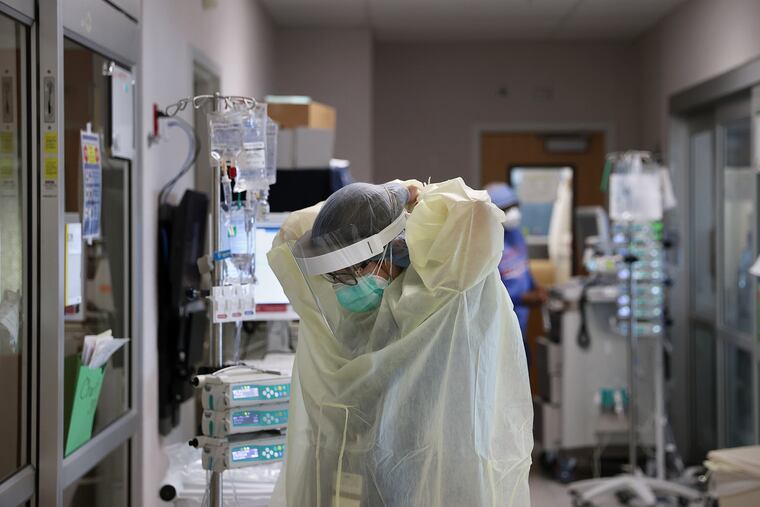The government should send clearer messages on personal protective equipment | Expert Opinion
Do we need to wear masks? What kind, and where? The public needs clear, vetted information.

Recently, when Vice President Mike Pence visited the Mayo Clinic, despite hospital policy requiring masks for all people at all times, he declined to wear one. This action sent a mixed message that exemplifies the difficulty the public currently faces in navigating what protections are important and necessary during the COVID-19 crisis. Are cloth masks effective at preventing infection? Maybe. Should you disinfect your mask in a microwave? No.
Given how little quality information is available, though, how would most people know what they should be doing? As health-care professionals and students, we recognize a huge gap between the evidence and communication with the public about how to protect ourselves. Specifically, the Centers for Disease Control and Prevention (CDC) has not been clear in its recommendations and messaging to the public about personal protective equipment (PPE), and should be doing more.
While the CDC did put out guidelines in March, they did not make limitations clear. For example, their guidelines state that masks can be decontaminated in a hot oven, but fail to mention that studies have only proven decontamination in extremely high temperatures in industrial ovens. Members of the public and health-care workers, confused by the mixed messages, have tried decontaminating PPE in their home ovens and microwaves, which has been found to compromise mask integrity.
» READ MORE: FEMA’s leader in Philly on what states still need to deal with coronavirus
Likewise, the CDC lists ultraviolet light (UV) as a decontamination method, without any details of how it has worked. That evidence only shows proof for bacteria, not for viruses, and not with the type of UV in a nail salon machine. The public does not know the difference. Given the lack of CDC guidance, they cannot be faulted for resorting to experiments with all kinds of UV light devices, most of which will almost certainly not work, leaving them falsely reassured and unprotected.
Instead, the CDC should be disseminating information with explicit limitations to the public in an easily digestible format, e.g., video spots and carefully designed social media posts for sharing. Do we need to wear masks? What kind? At all times, just outside the home, or in what setting? Lacking clear answers, people are left with inconsistent rules and rampant use of questionable protective wear and sterilization methods.
The government also must ensure we are protecting our health-care workers, who have been implementing and sharing over social media novel strategies to adjust usual hospital practices for PPE conservation and replacement. Some tactics are intuitive, such as moving patient monitors outside of patient rooms to reduce in-room visit frequency. But others deserve more scrutiny, such as using plastic trash bags to decrease aerosolization during intubation and converting operating rooms into intensive care units.
» READ MORE: Face masks: Your questions, answered
Given the urgency, we understand that not all approaches can be formally studied for safety or quality before trying them during this unprecedented pandemic. Yet, in the latest guidelines (under “Administrative Controls”), the CDC does not address, promote, or refute any of the widely circulating, unvalidated strategies that continue to be implemented across the country. Without any communication, hospitals improvise on the fly, unsure if what they are doing is working.
The lack of more comprehensive guidelines or strong evidence to support a single set of best practices has increased public confusion and facilitated the spread of misinformation. The government must do more and arm the public with clear, vetted information while properly acknowledging limitations. In doing so, the U.S. can empower public responses to future crises and promote safety for the public and frontline providers. Should the government be letting frontline workers wear trash bags and microwave masks if it isn’t going to protect them? Let’s be vocal and clear in addressing the American public with the best information that we have.
Monique Sager and Ramie Fathy are medical students at the University of Pennsylvania’s Perelman School of Medicine, where Jules Lipoff is an assistant professor of clinical dermatology.